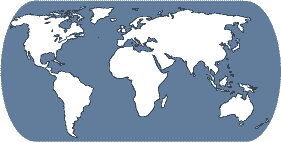Talking about an “early modern world” allows us to investigate the interconnectedness of world cultures, as opposed to their isolation. In fact, the period between 1400 and 1800 was characterized by the advent of the Age of Exploration, which made encounters between cultures almost inevitable, even when some areas (most notably, China) turned inwards and shunned international interactions. Moreover, the period was also notable for the entrenchment of European culture abroad, best exemplified by the accelerated Christianization of millions of non-Westerners. An intriguing commonalty also exists which justifies the use of the term “early modern” in a global perspective: most civilizations across the globe during the period—whether consciously or unconsciously—looked to their respective pasts as a golden age, and therefore embraced tradition as the cornerstone of society.
The “Early Modern” Category
The term "early modern" was coined by scholars of European history to label the four centuries from approximately 1400 to 1800 CE—the period from the Renaissance to the French Revolution. In effect, the dating of the period implies a time of transition, a progression from the “premodern” medieval age to modernity proper, as experienced primarily by Europeans. In defining the early modern, early 20th-century scholars defined modernity as well: a progressive age totally different from what preceded it, characterized by individualism, secularism, democratic sentiment, and the advent of technological change at unprecedented speed. However, while these concepts indeed began to reshape European history during the period, recent scholars have come to emphasize the degree to which the break from the past implied in “early modern” was not as complete as previously thought. Instead, the era is now understood to have been deeply rooted in its immediate past, shaped still to a significant degree by communal sentiment, familial responsibility, religious fervor, and the belief in monarchical government. The paradoxical nature of the term therefore reflects the complicated reality of the time, which was neither entirely like the Middle Ages nor like the modern era, yet exhibited elements of both.
There is a further difficulty presented by the term “early modern.” While it is now used to designate worldwide historical developments from the 15th to the 18th centuries, the term fits non-European histories uncomfortably. First, developments which commonly define Modernity did not significantly shape the rest of the world until much later, when Western influence permeated the globe. Moreover, many non-Western historians reject “early modern” in favor of expressions which gauge a country’s development in its own terms, rather than measured against a model reflective of European realities. Perfect examples would be to talk about “Ming China” instead of about “early modern China,” or about “Mughal India” rather than about “early modern India.”
“Early Modern” Views of Women
The early modern emphasis on tradition is perhaps clearest in the history of women during this period, as at the core of each culture was an ingrained patriarchy dating back thousands of years. In the West, for example, attitudes towards women were shaped by three strains of ancient European tradition: first, Judeo-Christian belief, which characterized women as either saintly, like the Virgin Mary, or corrupted, like Eve; second, Greek philosophy, which conceived of women’s physical frailty as leading also to their irrationality and intellectual inferiority; and third, Roman law, which denied women a legal persona and subjugated them to the control of male representatives. In China, on the other hand, it was Neo-Confucianism which informed beliefs about the inferiority of women. Confucianism set a strict social hierarchy, which was seen as crucial to the maintenance of order. Although not originally intended to subjugate women, Confucian ideology ultimately implied that, just as emperors were to rule over subjects, men were to be lords over women. These traditions, only two among many others with similar beliefs, came to influence a large portion of the globe, making common the idea that women were physically and intellectually inferior to men, and consequently shaping the implementation of a social system ever more concentrated on controlling women, segregating them to the private sphere.
Contemporaries around the globe believed that the inferiority of women that tradition decreed made females dangerous if not controlled; they could subvert order—whether social, economic, or spiritual—by being easy prey to evil and thus becoming the vehicle for men’s ruin. Therefore, during this period, male literature on “dangerous women” became prevalent, warning men against females who did not abide by prescribed behaviors. Equally common were books where such prescriptions were set out. Written for women with the aim of teaching them to behave correctly, and thus prove their ultimate worth, conduct manuals taught obedience, modesty, and silence. As proven by the manuals’ popularity, many women voluntarily espoused the principles set out in them.
Women’s Resistance to “Early Modern” Views
However, this is not to say that women did not have a dissenting voice or did not find ways to challenge gender roles. In fact, in the history of women across the globe, the early modern period is characterized by an increase in women’s literacy, which gave birth to a female literature condemning men’s subjugation of them and arguing for women’s inherent worth. The rise of a vocal female presence in literature and art is one of the most significant developments of the era. Equally important was the advent of new opportunities for women to claim, in an age of contact and acculturation, crucial roles in the evangelization and “civilizing” of the world around them.



